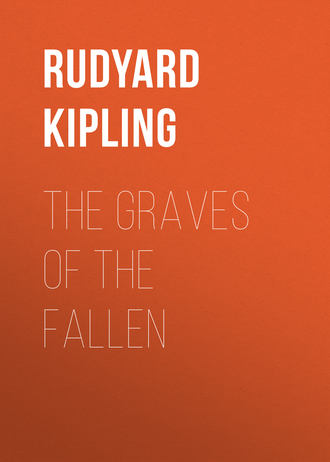
Редьярд Джозеф Киплинг
The Graves of the Fallen
Their Design and Care
T HE Commission instructed Sir Frederic Kenyon, K.C.B., to report how these aims could best be realised, and he, after consulting very fully with the relatives, representatives of the Services, religion and art, and knowing the practical limitations, particularly in obtaining labour, for carrying out such a vast undertaking, recommended that in each cemetery there should stand a Cross of Sacrifice, and an altarlike Stone of Remembrance, and that the headstones of the graves should be of uniform shape and size. Stone crosses to succeed the temporary wooden crosses were at first suggested, but crosses of the small size necessitated by the nearness of the graves to each other do not allow sufficient space for the men’s names and the inscriptions, and are also by their shape too fragile and too subject to the action of frost and weather for enduring use. Plain headstones, measuring 2 ft. 6 in. by 1 ft. 3 in., were therefore chosen, upon which the Cross or other religious symbol of the dead man’s faith could be carved and his Regimental badge fully displayed. The Regiments have been consulted as to the designs of these badges, some of which have now been approved and are ready for engraving as soon as experiments which are being carried on have shown how to overcome the difficulties of dealing with such numbers. In due time, then, wherever a man may be buried, from East Africa to North Russia, his headstone will carry his Regimental badge, identifiable the world over.
Besides the fighting forces, provision must be made for the graves of the merchant-seamen and discharged men whose deaths were due to enemy action, for Sisters and Nurses killed or died of wounds or disease, for Labour units of all races, and, indeed, for all who have served in any capacity in the war. The distinctive badges of these headstones are not yet all decided upon.






